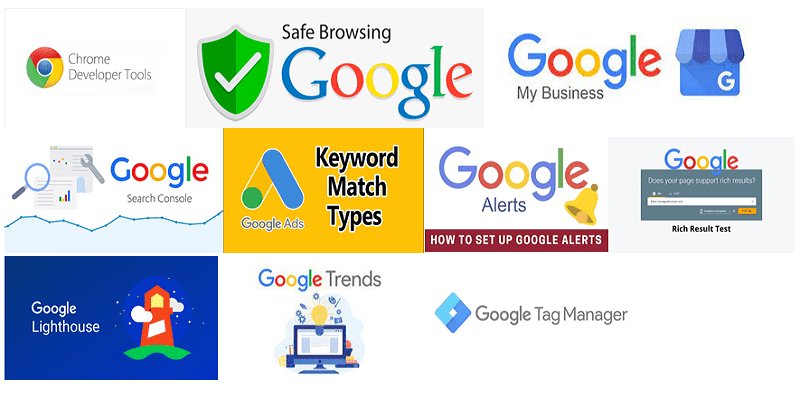
The world of e-commerce has exploded in recent years, and it’s no wonder why. With the rise of online shopping and the increasing popularity of working remotely, e-commerce has become a booming industry. One of the most popular and accessible ways to start an e-commerce business is through drop shipping. Drop shipping is a retail fulfillment method where a store doesn’t keep the products it sells in stock. Instead, when a store sells a product, it purchases the item from a third party and has it shipped directly to the customer. This eliminates the need for the store to have a physical inventory, making it an attractive option for those looking to start an online business. In this beginner’s guide to drop shipping, we’ll cover everything you need to know to get started, including the benefits and drawbacks of drop shipping, how to choose a niche, how to find suppliers, and how to set up your online store. Whether you’re looking to turn your passion into a business or simply want to make some extra income, this guide will help you take your first steps towards success in the world of e-commerce.
Introduction to Drop shipping
Drop shipping has become one of the most popular and successful business models in the e-commerce industry. It is a low-risk way to start a business as it does not require any inventory, warehousing, or shipping. In fact, all you need is a strong online presence and a reliable supplier. With drop shipping, you can sell products to customers without ever having to hold any physical stock.
The basic idea behind drop shipping is that you act as a middleman between the supplier and the customer. When an order is placed on your website, you forward the order and payment details to your supplier, who then packages and ships the product directly to your customer. This means that you don’t have to worry about the hassle of storing, packaging, and shipping products.
Drop shipping is beneficial for both the supplier and the seller. For the supplier, it means they have access to a large market without having to worry about marketing or sales. For the seller, it means they can start a business with minimal upfront costs and focus on building their brand and customer base.
However, as with any business model, drop shipping has its own challenges and pitfalls. It’s important to do your research and understand the ins and outs of drop shipping before jumping in. With the right mindset, strategy, and knowledge, drop shipping can be a profitable and fulfilling business venture.
Why Drop shipping is a popular ecommerce business model?
Drop shipping is a popular ecommerce business model because of its simplicity and low initial investment. With drop shipping, you don’t need to purchase inventory upfront or worry about storing and shipping products. Instead, you act as the middleman between the supplier and the customer. When a customer places an order on your website, you purchase the product from the supplier and have it shipped directly to the customer. This means you don’t need to worry about handling inventory or dealing with the logistics of shipping products.
Another advantage of drop shipping is that you have access to a wide variety of products that you can sell on your website. You can work with multiple suppliers and offer a range of products to your customers without having to invest in inventory. This allows you to test different products and markets without taking on a lot of risk.
Drop shipping also allows you to work from anywhere in the world as long as you have an internet connection. You can run your business from the comfort of your own home or while traveling.
Overall, drop shipping is a popular ecommerce business model because it’s easy to get started, has low overhead costs, and allows you to offer a wide range of products to your customers.
Pros and Cons of Drop shipping
Before diving into drop shipping, it’s important to weigh the pros and cons to see if this business model is right for you. Let’s start with the pros.
One of the biggest advantages of drop shipping is that you don’t need to manage inventory. This means you don’t have to invest in a warehouse to store products or worry about shipping and handling. Your supplier will take care of all of that for you. This also means you can start your business with relatively low capital compared to traditional retail businesses.
Another advantage is the flexibility it offers. You can run your drop shipping business from anywhere in the world where you have an internet connection. This means you have the option to work from home, a coffee shop, or even while traveling.
However, drop shipping also has its cons. Since you’re not handling the inventory or shipping, you have less control over the quality of the products and the shipping process. This means if there are any issues with the products or shipping, it may reflect poorly on your business.
Another disadvantage is that you’ll face stiff competition. Drop shipping has become a popular business model, meaning there are many other businesses offering the same products as you. This means you’ll need to find ways to differentiate yourself from the competition and constantly adapt to stay ahead.
Overall, drop shipping can be a great option for those looking to start an e-commerce business with low start-up costs and flexibility. However, it’s important to carefully consider the pros and cons before diving in.

How to get started with Drop shipping
Starting a drop shipping business is simpler than you might think. The first step is to choose the right products to sell. Once you’ve identified the products you want to sell, you can start looking for suppliers who offer drop shipping services. You can find these suppliers through online directories or by reaching out to manufacturers and wholesalers directly.
Before partnering with a supplier, it’s important to do your due diligence. Make sure they have a good reputation, offer reasonable prices, and have a reliable shipping process. You can also ask for samples of their products to ensure the quality meets your standards.
Once you have a supplier, you can start building your online store. Platforms like Shopify and Woo Commerce make it easy to set up an e-commerce website without any coding knowledge. You can customize the design of your store to match your brand and start adding your products.
When a customer places an order on your website, you’ll forward the order and payment information to your supplier. They’ll handle the fulfillment process, including packaging and shipping the product directly to the customer. This means you don’t have to worry about storing inventory, packing orders, or shipping products.
Finally, it’s important to focus on marketing your store to drive traffic and sales. You can use a variety of marketing channels, such as social media, email marketing, and paid advertising, to promote your store and attract customers. The more effort you put into marketing, the more successful your drop shipping business is likely to be.
How to choose the right niche for your Drop shipping business
Choosing the right niche is crucial to the success of your drop shipping business. A niche is a specific segment of a market that you will be focusing on. You should choose a niche that you are passionate about and have knowledge of, as this will make it easier for you to market your products and engage with potential customers.
Researching your niche is also an important step. You should investigate the demand for products within your chosen niche, as well as the competition. Look for products that are in demand but not oversaturated in the market. You can use Google Trends and other market research tools to help you identify popular products and niches.
Another important factor to consider is the profit margin. You should choose products that offer a good profit margin to ensure that your business is profitable. Research the costs involved in sourcing and shipping the products, as well as any other expenses such as marketing and advertising.
It’s also important to consider the target audience for your niche. Who are your potential customers and what are their needs and preferences? This will help you to choose products that are more likely to sell and tailor your marketing efforts to your target audience.
In summary, choosing the right niche for your drop shipping business involves researching the demand, competition, profit margins, and target audience. Take the time to carefully consider these factors and choose a niche that you are passionate about and has the potential to be profitable.
How to research and validate product ideas
When it comes to drop shipping, research and validation of your product ideas are crucial to your success. You need to find a product with high demand in the market and low competition.
Start by researching the market and identifying popular products. You can use tools such as Google Trends, Amazon Best Sellers, and social media platforms to identify products that are currently trending.
Once you have identified a few products that interest you, it’s time to validate them. You can do this by checking the competition, analyzing the product cost, and assessing the potential profit margins.
Check out your competition to see how many sellers are offering the same or similar product, and at what price. If the market is oversaturated, it might be difficult for you to succeed. On the other hand, a lack of competition might indicate that there is not enough demand for the product.
Analyzing the product cost is also important. You need to make sure that you can sell the product at a reasonable price and still make a profit. Consider the cost of shipping, packaging, and any additional fees that may apply.
Finally, assess the potential profit margins. You want to ensure that you can make a good profit on the product you sell. If the profit margins are too low, it might not be worth your time and effort to sell the product.
With proper research and validation of your product ideas, you can increase your chances of success and profitability in drop shipping.
How to find reliable suppliers and manufacturers for your products
When it comes to drop shipping, one of the most crucial aspects is finding reliable suppliers and manufacturers for your products. There are many platforms available to help you source your products, such as AliExpress, Oberlo, and SaleHoo. These platforms are designed to make it easy for entrepreneurs to find suppliers and manufacturers for their products.
One important thing to consider when choosing a supplier is to ensure that they have a good track record of delivering quality products on time. You can do this by checking their reviews and ratings on the platform or by reaching out to other drop shippers who have used their services.
Another consideration is to look for suppliers who offer competitive pricing. This will help you to remain profitable while still offering your customers affordable prices. However, be wary of suppliers who offer prices that are too good to be true, as this may indicate poor quality or even fraudulent products.
It’s also important to communicate with your suppliers regularly to maintain a good working relationship. This will help to ensure that orders are fulfilled promptly and any issues are resolved quickly.
Ultimately, finding reliable suppliers and manufacturers is key to the success of your drop shipping business. Take the time to research and choose your suppliers carefully to ensure that your customers receive high-quality products and that your business thrives.
How to set up an online store for your Drop shipping business
Setting up an online store for your drop shipping business is essential to start selling your products. You have two main options to create your online store: either by building it from scratch or by using an e-commerce platform.
Building a store from scratch can be a daunting task, especially if you don’t have any technical knowledge. Therefore, using an e-commerce platform like Shopify, Woo Commerce, or Big Commerce can make things a lot easier. These platforms offer a user-friendly interface, pre-designed templates, and integrations with payment gateways, shipping providers, and drop shipping apps.
Once you choose an e-commerce platform, you need to sign up for an account and select a pricing plan that suits your needs. Then, you can customize your store’s design by selecting a theme, uploading your logo, and creating pages for your policies, contact, and about us.
The next step is to add your products to your store. If you are drop shipping, you can import products from your supplier’s website or use a drop shipping app that connects to your supplier’s inventory. Make sure to write compelling product descriptions, upload high-quality images, and set competitive prices.
Lastly, you need to set up your payment and shipping options. Most e-commerce platforms offer integrations with popular payment gateways like PayPal, Stripe, or Square. For shipping, you can use your supplier’s shipping rates or calculate your own rates based on the weight and destination of your products. Once everything is set up, you can launch your store and start promoting your products to attract customers.
How to optimize your online store for conversions
Optimizing your online store for conversions is an essential aspect of running a successful drop shipping business. It’s not enough to have a great looking website, you need to ensure that it’s designed with the user in mind and that every element of your site is geared towards converting visitors into paying customers.
First, ensure that your site is easy to navigate and that all products are clearly listed in categories. Make sure that each product has a high-quality image and a detailed description with all the relevant information a customer might need. It’s also important to have a search bar on your site to make it easy for customers to find what they’re looking for.
Next, ensure that your site is optimized for mobile devices. With more and more people shopping on their smartphones and tablets, having a mobile-responsive website is crucial to your success. If your site isn’t mobile-friendly, you’ll be missing out on a significant portion of potential customers.
Another important aspect of optimizing your online store is to ensure that your checkout process is smooth and hassle-free. Make sure that the checkout process is simple, with as few steps as possible. Don’t force customers to create an account before they can place an order – this is a major turnoff for many shoppers. Instead, offer a guest checkout option or allow customers to sign up for an account after they’ve placed their order.
Finally, make sure that you have clear, prominent calls to action (CTAs) throughout your site. A CTA is an element on your site that encourages the user to take a specific action, such as “Add to Cart” or “Buy Now.” Make sure that your CTAs are prominent, easy to find, and clearly communicate what the user should do next. By optimizing your online store for conversions, you’ll be well on your way to running a successful drop shipping business.
How to market your Drop shipping business
Marketing is an essential aspect of any business, including drop shipping. It is what helps drive traffic to your website and converts visitors into paying customers. There are numerous ways to market your drop shipping business, and it’s essential to find the most efficient and cost-effective methods that work best for you.
One of the most effective ways to market your drop shipping business is through social media. Platforms such as Facebook, Instagram, and Twitter offer targeted advertising options that allow you to reach your ideal customer easily. You can create engaging social media posts, run paid ads, and collaborate with influencers to promote your products.
Another way to market your drop shipping business is through email marketing. Building an email list of interested customers and sending them newsletters, exclusive deals, and promotions can help keep your brand top of mind and encourage repeat purchases.
Search engine optimization (SEO) is another crucial marketing strategy for drop shipping businesses. By optimizing your product pages and blog content for relevant keywords, you can improve your website’s ranking in search engine results and attract more organic traffic.
Finally, consider partnering with other businesses or influencers in your industry to cross-promote each other’s products. This can be a great way to reach new audiences and build brand awareness.
In conclusion, marketing is essential for the success of any drop shipping business. With a well-rounded marketing strategy that incorporates social media, email marketing, SEO, and partnerships, you can effectively promote your products and grow your business.
How to manage your orders and handle customer service
Managing orders and handling customer service are two critical components of any e-commerce business, and drop shipping is no exception. When you’re drop shipping, it’s important to choose a reliable supplier who can fulfill orders quickly and efficiently. You’ll want to establish clear communication with your supplier to ensure that they’re fulfilling orders promptly and accurately.
When it comes to customer service, it’s important to be proactive and responsive. Your customers are the lifeblood of your business, and you want to make sure that they’re satisfied with their purchases. When a customer has a question or concern, respond to them promptly and professionally. If a customer has a problem with their order, work with them to find a solution that works for both of you.
One way to streamline your order management and customer service is to use an e-commerce platform that integrates with your drop shipping supplier. Many popular e-commerce platforms offer drop shipping integrations that allow you to automatically send orders to your supplier and receive tracking information back in return. This can save you time and reduce the risk of errors or delays in order fulfillment.
Remember, good customer service can be a key differentiator in a competitive e-commerce landscape. By providing prompt and professional customer service, you can build a loyal customer base that will keep coming back to your store.
How to scale your Drop shipping business
When starting a drop shipping business, it’s important to keep scalability in mind from the very beginning. As your business grows, you will want to be able to handle more sales and customers without sacrificing quality or efficiency. Here are some tips for scaling your drop shipping business:
- Automate processes: Look for ways to automate tasks such as order processing, inventory management, and customer service. This will help you save time and focus on growing your business.
- Expand your product range: Once you have a solid base of products that are selling well, consider adding new products to your store. This will help you reach a wider audience and increase sales.
- Optimize your website: Make sure your website is easy to navigate and has a fast load time. Customers are more likely to purchase from a website that is user-friendly and responsive.
- Outsource tasks: If you find yourself overwhelmed with the day-to-day tasks of running your business, consider outsourcing some of them to freelancers or virtual assistants. This will help you focus on the big picture and growing your business.
- Invest in marketing: As your business grows, it’s important to invest in marketing to reach new customers. Consider using social media ads, email marketing, and SEO to drive traffic to your website and increase sales.
By following these tips, you can scale your drop shipping business and take it to the next level. Remember, it takes time and effort to build a successful business, but with perseverance and hard work, you can achieve your goals.

Common Drop shipping mistakes to avoid
Drop shipping can be a lucrative business venture, but like any other business, it comes with its own unique set of challenges. Here are some of the most common mistakes that drop shippers make and how you can avoid them.
- Not researching your niche thoroughly: It’s important to research your niche thoroughly before you start drop shipping. This will help you to understand the customer demand, competition, and pricing strategies.
- Choosing the wrong suppliers: Your supplier is a crucial part of your drop shipping business. Always choose a reliable supplier who can deliver quality products on time.
- Not maintaining a good relationship with your supplier: Maintaining a good relationship with your supplier is essential to ensure that you have a steady supply of products and that you can negotiate better prices.
- Ignoring customer feedback: Customer feedback is important for your business. Ignoring feedback can lead to unhappy customers, bad reviews, and a damaged reputation.
- Not investing in marketing: Marketing is crucial for any business. If you don’t invest in marketing, you won’t be able to reach your target audience and grow your business.
- Not having a clear return policy: Having a clear return policy is important for your customers. It helps them to feel secure in their purchase and ensures that you have a clear process in place for returns.
By avoiding these common mistakes, you can set yourself up for success in the drop shipping business. Take the time to research your niche, choose the right suppliers, maintain good relationships with them, listen to customer feedback, invest in marketing, and have a clear return policy. With the right strategies in place, you can build a thriving drop shipping business.
Conclusion and next steps
Congratulations! You’ve made it to the end of this beginner’s guide to drop shipping. By now, you should have a much better understanding of what drop shipping is, how it works, and what you need to do to get started.
Whether you’re looking to start a side hustle or to build a full-time e-commerce business, drop shipping offers a low-risk, low-cost way to get started. By working with suppliers to fulfill orders for you, you can focus on building your brand and marketing your products without having to worry about inventory management or shipping logistics.
So, what’s next? If you haven’t already, start researching and identifying potential niches and products that you’re interested in selling. Look for products that are in-demand but not oversaturated in the market. Research potential suppliers and ensure that they’re reliable and can provide quality products and efficient shipping.
Once you’ve found a product and supplier that you’re happy with, it’s time to set up your online store. Choose a platform that’s easy to use and customize, and make sure that it’s optimized for mobile users. Create high-quality product listings that include detailed descriptions and appealing images.
Finally, start marketing your store and products. Use social media, email marketing, and other channels to reach your target audience and drive traffic to your site. Continually monitor your store’s performance and make adjustments as needed to improve your conversion rates and sales.
Remember that building a successful e-commerce business takes time and effort. But with the right approach and a willingness to learn and adapt, you can turn your drop shipping business into a profitable venture. Good luck!
We hope you enjoyed our beginner’s guide to starting an e-commerce business with drop shipping. Drop shipping has become a popular business model for entrepreneurs looking to start an online store without having to worry about inventory management. With the tips and advice provided in this article, we hope that you feel confident in your ability to start and grow a successful e-commerce business. Remember- success takes time, patience, and a lot of hard work, but with the right mindset and dedication, you can achieve your goals. Good luck on your e-commerce journey!













3 replies on “What Is Drop shipping?”
Your article helped me a lot, is there any more related content? Thanks!
Your article helped me a lot, is there any more related content? Thanks!
I don’t think the title of your article matches the content lol. Just kidding, mainly because I had some doubts after reading the article.